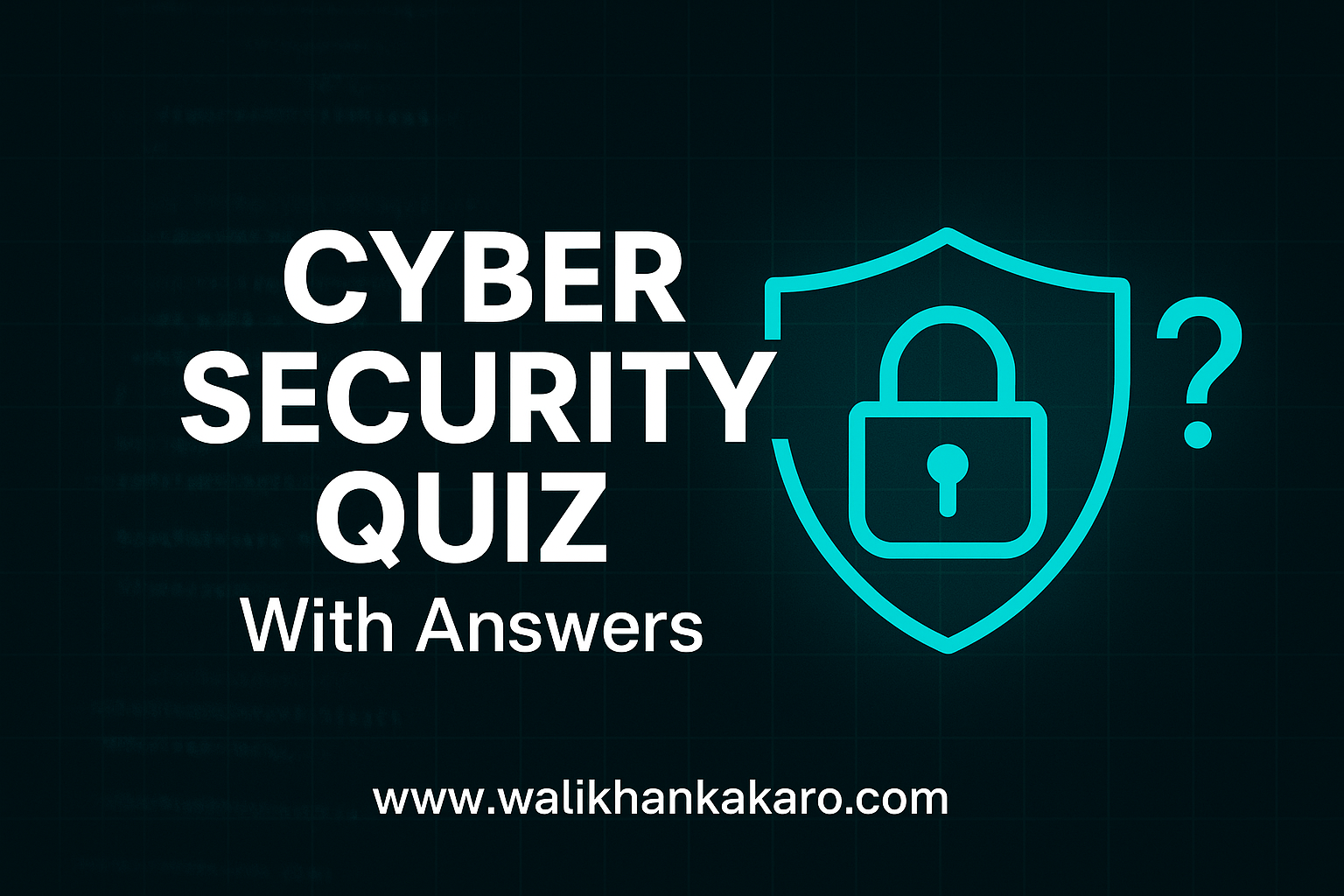Table of Contents
Introduction to Cybersecurity
What is Cybersecurity?
Answer: Cybersecurity is the practice of protecting your computer systems, networks, and data from theft, damage from unauthorized access, and maintaining the confidentiality, integrity, and availability of digital information.
What is the importance of Cybersecurity?
Answer: Protection of Sensitive Data, preservation of Privacy, Business continuity, Financial Security, National security, Prevention of Disruption, Protection of Intellectual Property.
What is the Threat?
Answer: Threat means a potential danger or harmful event that can compromise the security of computer systems, networks, or data. Threats have many sources, e.g., Malware, DoS, DDoS, or even a human being.
What is the Risk?
Answer: Risk is the possibility of loss due to a threat exploiting a weakness or vulnerability. In terms can result in business, disruption, financial loss, or physical harm as well. To determine the risk, we use the following formula.
Risk + Threat = Vulnerability.
What are the Cybersecurity Policies and Procedures?
What is Risk Management?
Answer: Risk Management information security risk management, or ISRM, is the process of managing risks associated with the use of information technology. It involves identifying, assessing, and treating risks to the confidentiality, integrity, and availability of an organization’s assets.
1: Risk Identification:
Identifies the sources, causes, and consequences of the internal and external risks.
2: Risk Assessment:
Assesses the organization’s risk and provides an estimate of the likelihood and impact of the risk.
3: Risk Treatment:
Selects and implements appropriate controls on the identified risks.
1: Risk Tracking:
Risk Track ensures appropriate controls are implemented to handle risks and identifies the chance of a new risk occurring.
2: Risk Review:
Risk Review evaluates the performance of the implemented risk management strategies.
1: Cybersecurity Policies:
Answer: Cybersecurity policies are documented guidelines and rules that define the organization’s approach to protecting its information systems, data, and assets from security threats. These policies establish a framework for managing and mitigating risks related to cybersecurity. Cybersecurity policies cover a wide range of areas, such as access control, data protection, network security, incident response, and compliance with industry regulations.
2: Cybersecurity Procedures:
Answer: Cybersecurity procedures are detailed step-by-step instructions that operationalize the principles outlined in the cybersecurity policies. While policies provide a broad framework, procedures after specific guidance on how to implement security measures, respond to incidents, and adhere to established protocols.
Examples of cybersecurity procedures include incident response plans, access control procedures, and data backup and recovery processes.
Key Components of Policies and Procedures
Access Control Policies and Procedures:
1: Policies define who should have access to what.
2: Procedures detail how access permissions are granted, modified, and revoked.
Data Protection Policies and Procedures:
1: Policies outline the organization’s commitment to safeguarding sensitive data.
2: Procedures specify encryption methods, data classification, and handling guidelines.
Incident Response Policies and Procedures:
1: Policies establish the organization’s stance on incident detection, reporting, and response.
2: Procedures provide a step-by-step guide on how to respond to specific types of security incidents.
Network Security Policies and Procedures:
1: Policies set the rules for securing the organization’s network infrastructure.
2: Procedures detail the configuration of firewalls, intrusion detection systems, and other network security measures.
Acceptable Use Policies and Procedures:
1: Policies define acceptable and unacceptable behavior regarding the use of organizational resources.
2: Procedures after guidelines on employee behavior, internet usage, and social media use.
Remote Access Policies and Procedures:
1: Policies dictate the conditions under which remote access is allowed.
2: Procedures provide instructions on setting up and securing remote access connections.
Key Components of Cybersecurity Policies and Procedures-2
Cloud security policies and procedures:
1: Policies establish the organization’s approach to securing cloud-based services and data.
2: Procedures guide secure cloud adoption, data storage, and access controls.
Employee training and Awareness policies and procedures.
1: Policies emphasize the importance of ongoing cybersecurity training.
2: Procedures detail the methods and frequency of employee training sessions and awareness campaigns.
Physical security policies and procedures:
1: Policies define measures to secure physical facilities and equipment.
2: Procedures offer guidance on access controls, surveillance, and monitoring of physical spaces.
User Awareness and Training:
1: Process: Educate and train employees on cybersecurity best practices and the importance of risk management.
2: Activities: Provide ongoing training sessions, conduct awareness campaigns, and simulate phishing exercises to enhance the security awareness of employees. A well-informed workforce is a crucial line of defense.
Network Security:
1: Network: a network is a group of two or more interconnected computers or other electronic devices to exchange data and share resources.
2: Network Security: TCP/IP has several vulnerabilities. Therefore, it is vulnerable to DoS/DDoS attacks, fragment attacks, spoofing attacks, oversized packet attacks, and man-in-the-middle attacks.


